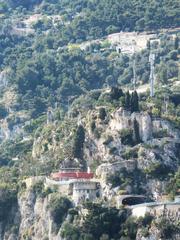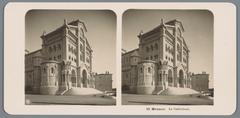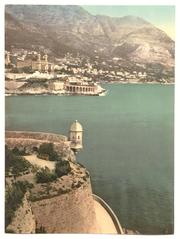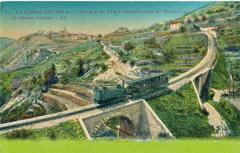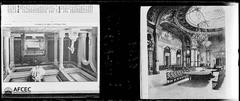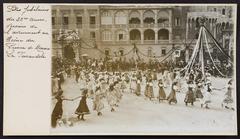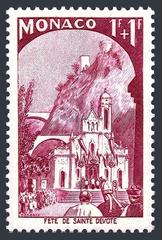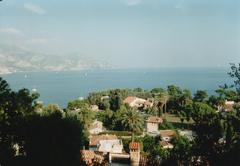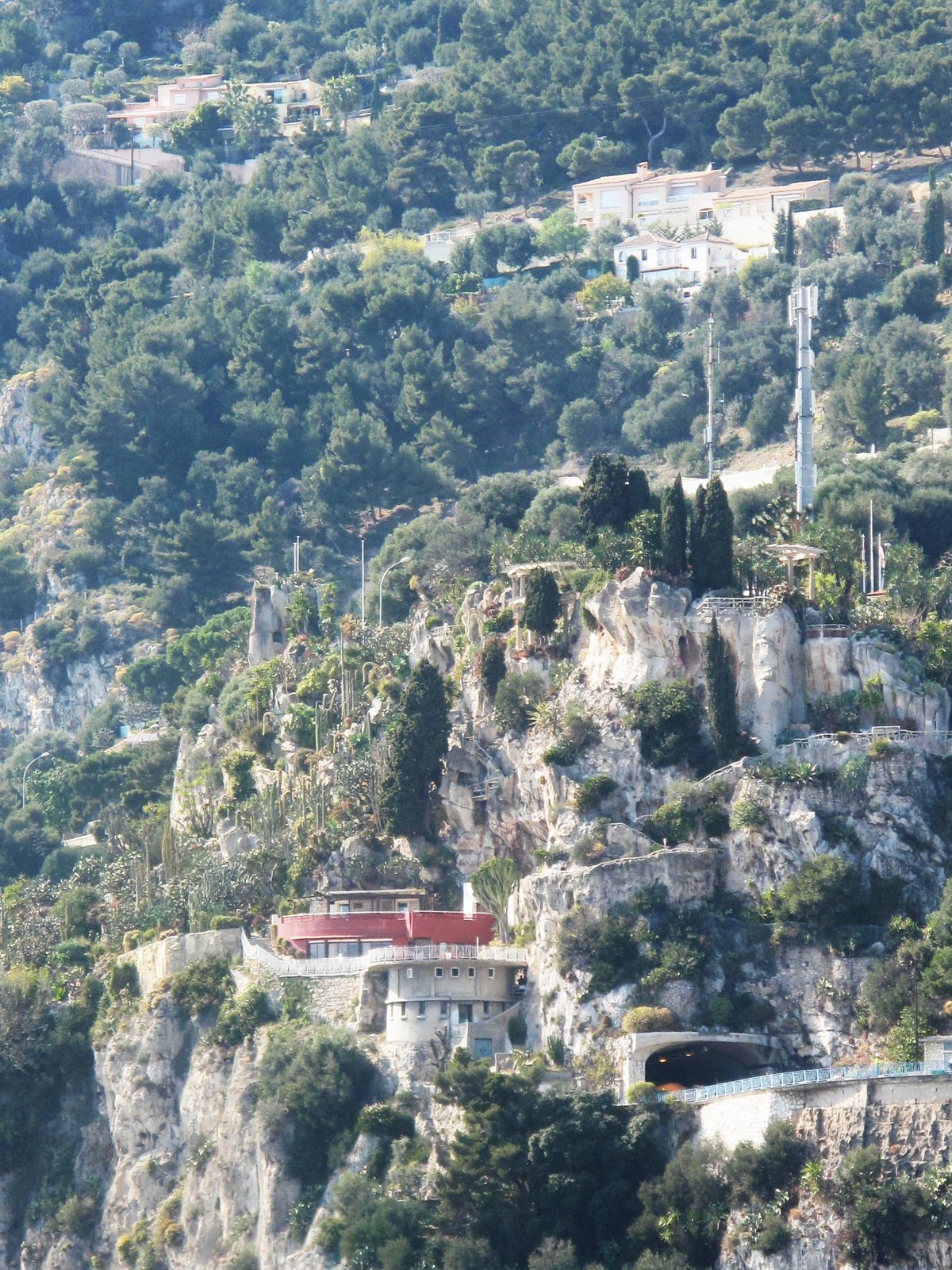
Comprehensive Guide to Visiting Palais Princier de Monaco
Date: 17/07/2024
Introduction
The Palais Princier de Monaco, often referred to as the Prince’s Palace of Monaco, is a landmark steeped in history and grandeur. Perched atop the Rock of Monaco, this iconic edifice has been the residence of the Grimaldi family for over 700 years, serving as a symbol of their enduring legacy and the sovereignty of Monaco. Originally constructed in 1191 as a Genoese fortress, the palace has undergone numerous architectural transformations that mirror the evolving tastes and political climates of Europe. Visitors today are drawn not only to its historical significance but also to its cultural, political, and social roles within the principality. This guide aims to provide a comprehensive look at the palace’s rich history, visitor information, and practical tips to ensure a memorable visit.
Table of Contents
- [History of Palais Princier de Monaco](#history-of-palais-princier-de-monacohistory-of-palais-princier-de-monaco)
- [Origins and Early History](#origins-and-early-historyorigins-and-early-history)
- [The Grimaldi Dynasty](#the-grimaldi-dynastythe-grimaldi-dynasty)
- [Architectural Evolution](#architectural-evolutionarchitectural-evolution)
- [The 17th and 18th Centuries](#the-17th-and-18th-centuriesthe-17th-and-18th-centuries)
- [The French Revolution and Napoleonic Era](#the-french-revolution-and-napoleonic-erathe-french-revolution-and-napoleonic-era)
- [Restoration and Modernization](#restoration-and-modernizationrestoration-and-modernization)
- [The Palace Today](#the-palace-todaythe-palace-today)
- [Visitor Information](#visitor-informationvisitor-information)
- [Ticket Prices and Visiting Hours](#ticket-prices-and-visiting-hoursticket-prices-and-visiting-hours)
- [Guided Tours](#guided-toursguided-tours)
- [Accessibility Information](#accessibility-informationaccessibility-information)
- [Travel Tips and Nearby Attractions](#travel-tips-and-nearby-attractionstravel-tips-and-nearby-attractions)
- [Monaco Cathedral](#monaco-cathedralmonaco-cathedral)
- [Oceanographic Museum](#oceanographic-museumoceanographic-museum)
- [Saint Martin Gardens](#saint-martin-gardenssaint-martin-gardens)
- [Special Events and Photographic Spots](#special-events-and-photographic-spotsspecial-events-and-photographic-spots)
- [FAQ](#faqfaq)
- [Conclusion](#conclusionconclusion)
- [References](#referencesreferences)
History of Palais Princier de Monaco
Origins and Early History
The Palais Princier de Monaco dates back to the late 12th century. Originally constructed in 1191 as a Genoese fortress, the palace was strategically positioned on the Rock of Monaco, a natural fortress with a commanding view of the Mediterranean Sea. This location was chosen for its defensive advantages, allowing the Genoese to control the surrounding region and protect against maritime threats.
The Grimaldi Dynasty
The history of the palace is inextricably linked with the Grimaldi family, who have ruled Monaco for over 700 years. The Grimaldi’s connection to the palace began in 1297 when François Grimaldi, disguised as a monk, seized the fortress from the Genoese. This event marked the beginning of the Grimaldi dynasty’s long reign over Monaco. The palace has since served as the official residence of the Grimaldi family, evolving from a medieval fortress into a symbol of their enduring power and influence.
Architectural Evolution
Over the centuries, the Palais Princier has undergone numerous transformations, reflecting the changing tastes and needs of its occupants. During the Renaissance, the palace was expanded and embellished with elegant architectural features. Notable additions included the construction of the State Apartments, which were adorned with frescoes, tapestries, and intricate woodwork. The palace’s architecture is a blend of medieval fortifications and Renaissance elegance, showcasing the evolution of European architectural styles.
The 17th and 18th Centuries
The 17th and 18th centuries were periods of significant development for the palace. Prince Honoré II, who ruled from 1604 to 1662, played a pivotal role in transforming the fortress into a princely residence. He commissioned the construction of the Hercules Gallery, a grand hall decorated with frescoes depicting the labors of Hercules. This period also saw the addition of the Throne Room, which became the ceremonial heart of the palace.
The French Revolution and Napoleonic Era
The French Revolution and the subsequent Napoleonic era brought turmoil to Monaco and its ruling family. In 1793, the Grimaldi family was forced to flee, and the palace was seized by French revolutionary forces. It was used as a military hospital and barracks during this time, leading to significant damage and neglect. The Grimaldis were only able to return to their ancestral home in 1814, following the fall of Napoleon.
Restoration and Modernization
The 19th and 20th centuries were marked by efforts to restore and modernize the palace. Prince Charles III, who ruled from 1856 to 1889, initiated extensive renovations to repair the damage inflicted during the revolutionary period. He also established the Monte Carlo Casino, which brought wealth and prestige to Monaco, allowing for further enhancements to the palace.
In the 20th century, Prince Rainier III, who ruled from 1949 to 2005, continued the work of his predecessors. He oversaw the restoration of the palace’s historic rooms and introduced modern amenities to ensure the comfort of the royal family. Prince Rainier III’s marriage to American actress Grace Kelly in 1956 brought international attention to Monaco and its royal residence, further cementing the palace’s status as a symbol of glamour and sophistication.
The Palace Today
Today, the Palais Princier de Monaco remains the official residence of the reigning Prince of Monaco, Albert II. The palace is not only a symbol of the Grimaldi family’s enduring legacy but also a major tourist attraction. Visitors can explore the State Apartments, which are open to the public during certain times of the year. These rooms offer a glimpse into the opulent lifestyle of Monaco’s royal family, with their lavish decorations and historical artifacts.
The palace also hosts various official events and ceremonies, including the annual National Day celebrations on November 19th. During these events, the palace’s courtyard becomes the focal point of festivities, with parades, concerts, and fireworks.
Visitor Information
Ticket Prices and Visiting Hours
- Ticket Prices: Adult tickets are priced at €10, while children (6-16 years) and students can enter for €5. Children under 6 years old enter for free.
- Visiting Hours: The palace is open daily from April to October, 10:00 AM to 6:00 PM. From November to March, it is open from 10:00 AM to 5:00 PM. Please check the official website for any changes in opening hours.
Guided Tours
Guided tours are available in several languages, including English, French, Italian, and German. These tours provide a deeper insight into the history and architecture of the palace.
Accessibility Information
The palace is accessible to visitors with disabilities. There are ramps and elevators to accommodate wheelchairs, and assistance is available upon request.
Travel Tips and Nearby Attractions
While visiting the Palais Princier de Monaco, consider exploring nearby attractions such as the Oceanographic Museum, the Monte Carlo Casino, and the Monaco Cathedral. These sites offer additional insights into Monaco’s rich cultural and historical heritage.
Monaco Cathedral
Just a short walk from the palace, the Monaco Cathedral is the final resting place of many members of the Grimaldi family, including Princess Grace.
Oceanographic Museum
Located on the cliffside, the Oceanographic Museum offers fascinating marine exhibits and stunning views of the Mediterranean.
Saint Martin Gardens
Adjacent to the palace, the Saint Martin Gardens provide a peaceful retreat with lush greenery and scenic pathways.
Special Events and Photographic Spots
The palace courtyard is a popular spot for photography, especially during official events like the changing of the guard, which takes place daily at 11:55 AM. Special events such as concerts and exhibitions are also held at the palace throughout the year.
FAQ
What are the visiting hours for Palais Princier de Monaco? The palace is open daily from April to October, 10:00 AM to 6:00 PM. From November to March, it is open from 10:00 AM to 5:00 PM.
How much do tickets to the Palais Princier de Monaco cost? Adult tickets are priced at €10, while children (6-16 years) and students can enter for €5. Children under 6 years old enter for free.
Is the Palais Princier de Monaco accessible for people with disabilities? Yes, the palace is accessible to visitors with disabilities. There are ramps and elevators to accommodate wheelchairs, and assistance is available upon request.
Conclusion
The Palais Princier de Monaco is more than just a royal residence; it is a cultural and historical landmark that embodies the rich heritage of Monaco. Whether you are interested in its storied past, architectural splendor, or vibrant present, a visit to this iconic palace is sure to be a memorable experience. For more detailed information on the history and significance of the Palais Princier de Monaco, you can visit the official Monaco Government Tourist Office website.
References
- Palais Princier de Monaco. (n.d.). Official Palace Website. Retrieved July 17, 2024, from https://www.palais.mc/en/
- Visit Monaco. (n.d.). The Prince’s Palace. Retrieved July 17, 2024, from https://www.visitmonaco.com/en/place/monuments/95/the-prince-s-palace
- Oceanographic Museum. (n.d.). Official Website. Retrieved July 17, 2024, from https://www.oceano.org/en/
- Princess Grace Foundation. (n.d.). Official Website. Retrieved July 17, 2024, from https://www.pgfusa.org/
- Monaco Grand Prix. (n.d.). Formula 1 Official Website. Retrieved July 17, 2024, from https://www.formula1.com/en/racing/2024/Monaco.html
- Prince Albert II of Monaco Foundation. (n.d.). Official Website. Retrieved July 17, 2024, from https://www.fpa2.org/en/
- Monaco Cathedral. (n.d.). Visit Monaco. Retrieved July 17, 2024, from https://www.visitmonaco.com/en/place/cathedrals/20006-monaco-cathedral
